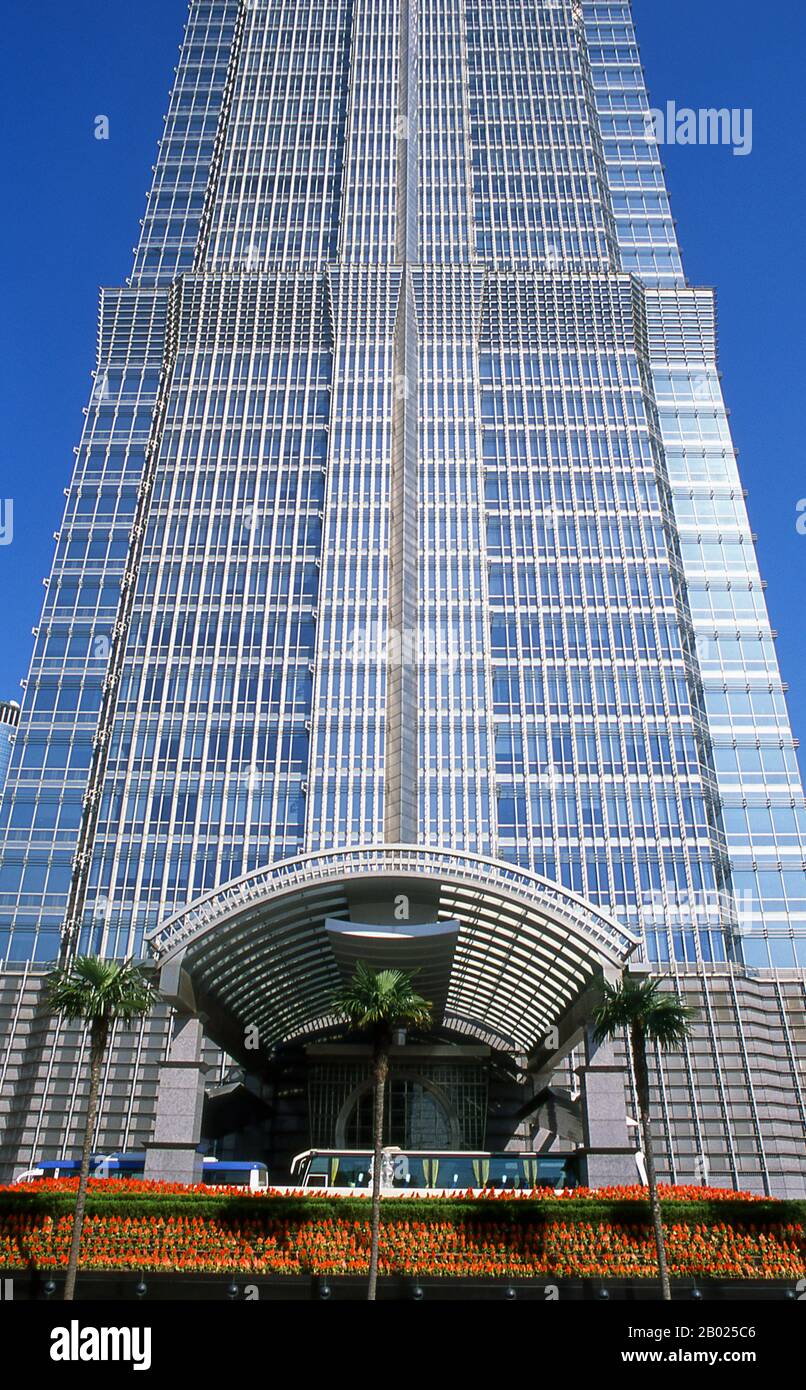The Jin Mao Tower, at 421m (1,381ft) was until 2007 the highest building in China. Its postmodern form, whose complexity rises as it ascends, draws on traditional Chinese architecture such as the tiered pagoda, gently stepping back to create a rhythmic pattern as it rises. Shanghai began life as a fishing village, and later as a port receiving goods carried down the Yangzi River. From 1842 onwards, in the aftermath of the first Opium War, the British opened a ‘concession’ in Shanghai where drug dealers and other traders could operate undisturbed. French, Italians, Germans, Americans and Japan

Image details
Contributor:
CPA Media Pte Ltd / Alamy Stock PhotoImage ID:
2B025C6File size:
46.3 MB (2.4 MB Compressed download)Releases:
Model - no | Property - noDo I need a release?Dimensions:
3169 x 5105 px | 26.8 x 43.2 cm | 10.6 x 17 inches | 300dpiDate taken:
28 September 2012Photographer:
Pictures From HistoryMore information:
This image could have imperfections as it’s either historical or reportage.
The Jin Mao Tower, at 421m (1, 381ft) was until 2007 the highest building in China. Its postmodern form, whose complexity rises as it ascends, draws on traditional Chinese architecture such as the tiered pagoda, gently stepping back to create a rhythmic pattern as it rises. Shanghai began life as a fishing village, and later as a port receiving goods carried down the Yangzi River. From 1842 onwards, in the aftermath of the first Opium War, the British opened a ‘concession’ in Shanghai where drug dealers and other traders could operate undisturbed. French, Italians, Germans, Americans and Japanese all followed. By the 1920s and 1930s, Shanghai was a boom town and an international byword for dissipation. When the Communists won power in 1949, they transformed Shanghai into a model of the Revolution.